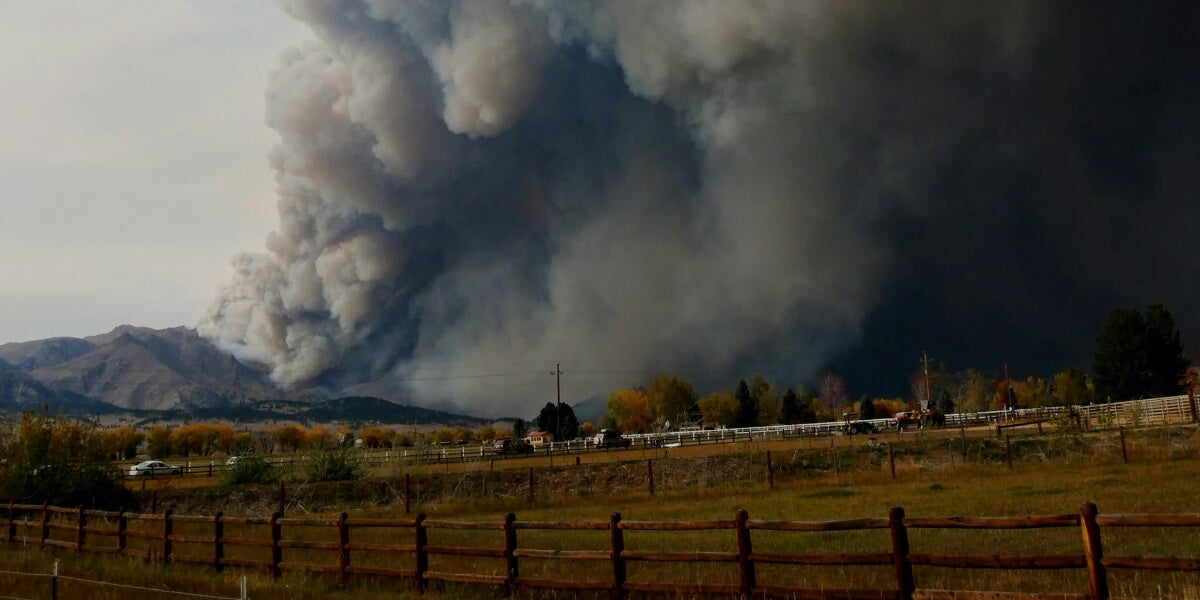
Martin Banks 03.21.25

Perhaps you’ve had your share of experiences with wildfires, or your experience is limited to toasting marshmallows. Either way, being prepared is essential for homesteading safety. The recent massive California wildfires taught the nation how important such preparations are — even more so when you live in a remote area.
Basic Wildfire Knowledge
If you’ve done some firefighter training, you’ve likely covered the basics, but it’s always good to get the basics down so you understand defense strategies. Wildfires include any form of burning in trees, brush and grass. These fires:
- Need air and fuel — when denied these, it’s possible to suppress and extinguish fire.
- Burn faster in tall grass or dense trees because of the extra fuel.
- Can spread farther down hills and valleys because of airflow patterns.
- Can “run” even when there’s no forecast wind.
- Can “jump” large spaces — including highways — when the wind is in its favor.
- Turn tree branches, pine needles and pine cones into projectiles that ignite areas ahead of the burn line.
- Make dangerous flames, intense heat, smoke and oxygen deficiency behind it.
- Create large amounts of smoke, which can cause health issues for people and livestock.
- Smolder, especially in piles of animal droppings, creating flare-ups when airflow increase.
5 Wildfire Defense Strategies for Homesteaders
Working with a plan lets you strategically prepare your homestead for any future fire threats. Preparation and effective management can save your livelihood and property. Nobody wants to experience financial loss and damage like the recent California wildfires, which consumed 16,000 structures and may cost as much as $250 billion in economic losses.
1. Create a Defensible Space
Removing combustible materials before fire season starts is an essential safety measure. You can turn these into useful resources. For example, dropping excess branches into local rivers for fish to feed and breed among creates ideal fishing spots. The area around your homestead is divisible into three areas:
- Zone zero: This is zero to 5 feet from the buildings. Remove all combustible materials like firewood, brush and dried vegetation, and reduce tall grass with regular mowing to ensure the area isn’t flammable.
- Zone one: This zone extends up to 30 feet from the home and is regulated by national fire safety laws. Remove all overhanging branches and dead plants, and avoid storing wood or brush piles from yard work.
- Zone two: The last zone extends 100 yards from your property line. Expand vertical clearance between tall trees by cutting out thick branches. Clearance helps prevent top fires from spreading through dry branches or leaves.
2. Invest in Firefighting Equipment
Ensure your firefighting equipment is up to date. Check fire extinguishers before fire season, maintain water hoses and spray nozzles, and ensure these are within easy reach. Keep sufficient fuel on hand to fill all-terrain vehicles and fire-fighting pressure pumps, and always keep water tanks and reservoirs filled to top up mobile tanks and sprayers quickly. Train family members and communicate with neighboring homesteads so you know who to help and who can help you in case a fire comes. These weather events are never an isolated problem.

3. Have an Emergency Fire Plan
Keep an emergency fire plan ready and rehearse it with your family and friends. Any of them — including young children — should know who to call in an emergency, such as a fire. An action plan helps cut back on unnecessary panic and ensure help arrives quickly. If you’re unsure about a proper fire emergency plan, consult with your local park rangers and fire department for guidance. A plan involves:
- Identifying safe areas to herd livestock to when a fire approaches.
- Knowing which gates to open or unlock.
- Choosing who handles removing valuable documentation from your home.
- Determining how to evacuate pets and other small animals.
4. Burn Pre-Season Fire Strips
Check what the legal requirements are for fire strips or burns. The law likely regulates the times of the year you may engage in controlled burns to strip any combustible vegetation along fence lines. Usually, this is an effort shared by neighboring homesteads, as it protects both properties. The fire department may also assist with burning tracer lines. You should get acquainted with emergency professionals and form a supportive relationship.
5. Get Involved in the Community
Communities often conduct training days for fire management, and you and your family must participate. Untrained volunteers become a liability when a fire is raging. Everybody must know what to do, what steps are safe and how to contribute helpfully.
Wildfires: Preparation Is Key
Fires are a devastating natural force. When you and your surrounding homesteads aren’t prepared, it can lead to massive damage.
Get started on basic fire preparation well in advance of the burn season to protect what’s yours. Always reduce and remove combustible materials from the burn zones, check and maintain fire equipment and training protocols, create suitable and safe fire strips or tracers to limit approaching fires, maintain strong communication with local resources like the fire department, and remain vigilant of approaching fires.
Trending Products










